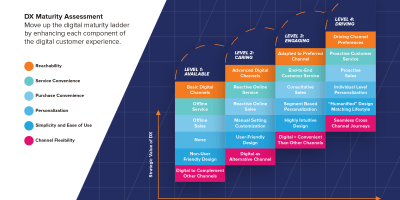
How Acquia DAM Integrates with Acquia’s Composable DXP

Brands need to give their teams the freedom and flexibility to craft high-quality digital experiences more quickly. Doing so takes an integrated set of tools for asset management, content publication, customer data, product information, and marketing automation — all of which make up a digital experience platform (DXP). Because content is required for experiences on any device, digital asset management (DAM) is a crucial component of any modern DXP.
Acquia DAM (Widen) and other Acquia products integrate to deliver content at the right steps of the customer journey. With DAM, you can find all your content in one place, publish approved content in the right format and size, as well as ensure brand consistency across multiple digital channels. You can also reduce storage needs with Acquia DAM’s embed codes instead of storing content in two places.
Here’s a look at how our DAM solution fits into the bigger ecosystem of Acquia DXP tools that help you deliver omnichannel digital experiences.
Why delivering digital experiences takes an ecosystem
Let’s examine a single digital experience to find out why organizations need an ecosystem of tools and platforms to successfully produce an excellent DX.
Say a customer visits your website on their smartphone and looks at a number of high-value products. They look at one product again later on their desktop, talk to a customer service rep about product details, and sound ready to buy. A few days later, they return to your site’s product page. They leave again.
That’s when you could automatically send them a custom email — if you had the right DXP. The email could highlight the color of the product they were looking at, along with helpful FAQS. That nudge could push them to make a decision and purchase.
To produce this kind of experience, a siloed content management system (CMS) won’t cut it. You need a composable digital experience platform.
What is a composable digital experience platform?
The scenario above is possible with a composable DXP. Modular systems work together to deliver a single, relevant, content-based interaction at an optimal point in the customer’s journey.
Let’s review the concept of composable experiences and the companies that embrace them – Gartner actually coined the composable enterprise term a few years ago: “A composable enterprise is an organization that can innovate and adapt to changing business needs through the assembly and combination of packaged business capabilities. To enable the composable enterprise, organizations will need to adapt the way they source and deliver applications as vendors deliver more modular capabilities.”
Most businesses want to be composable whether they call it that or not. And for all enterprises operating today, getting to that point means using a composable DXP. According to the manifesto of Acquia Co-founder and Chief Technology Officer, Dries Buytaert, a composable DXP has to account for six key elements:
- Omnichannel delivery. A DXP requires diverse experience creation and delivery methods.
- Experience creation. All business users need to be empowered with low-code/no code web design tools.
- Configuration. Components need to be discoverable and orchestrated.
- Data services and activation. Data needs to be unified and automated.
- Web operations. Software architecture needs to be open and modular.
- Content management. Multichannel experiences demand centralized content management.
Many organizations are missing technology that enables that last element. Content that enables multichannel experiences needs centralized management, so if you want a DXP that delivers omnichannel experiences, you have to add DAM software to your technology ecosystem.
Benefits of integrating DAM and DXP
By integrating Acquia DAM into the Acquia DXP, you lay the foundation for a composable digital experience that comes with a long list of benefits, like speeding up time-to-market for content, improving brand consistency, reducing brand risk, and insight into content efficacy.
Key benefits of integrating DAM in your DXP
- Speed up time-to-market for content. We’re mentioning this again because greater agility in content creation accelerates company growth.
- Organize content in one system. Let team members and external partners find exactly what they need.
- Streamline your workflow. Share proofs, collect feedback, and gather approvals from each reviewer.
- Repurpose your best-performing content. Save time and valuable resources by reusing and repurposing content.
- Ensure brand consistency. Align brand guidelines and content across creators and communicators.
- Integrate your martech technology (martech) stack. Make content available wherever you need it.
- Monitor content efficacy. Understanding where and why teammates publish specific content and measure how well it engages your audience.
- Minimize risk. Uphold content rights management guidelines and minimize usage violations.
- Publish brand-approved content. Give team members and external partners access to approved content.
- Consolidate redundant tools. Bring content storage, file sharing, and collaboration tools into one system for all team members.
Specific features of an Acquia DAM and Drupal integration
Using open source integration, content authors can now leverage Acquia DAM embed codes and manage versioning through the Media Library in Drupal. The Drupal Media Library has been extended so users can easily find their digital assets via search, metadata, and categories.
Acquia DAM makes it simple to organize and control assets, as well as achieve brand consistency through a centralized, cloud-based library.
Integration highlights
- View Drupal integration links on the Asset Digest page in the DAM system to see where assets are being used.
- Easily access all legally approved documents and PDFs and link to them, allowing website visitors to view them in Drupal’s accessibility-standard approved document viewer.
- Embed on-brand videos into web pages that meet accessibility standards without managing a separate video repository.
- Insert image versions into your Drupal Media Entity.
- Allow DAM admins to manage and govern assets by monitoring the use of assets in your CMS from the DAM system.
Acquia currently offers three products and/or add-ons that can integrate with Acquia DAM to accelerate content delivery, ensure brand consistency, reduce brand risk, and improve CX across every channel.
Acquia CMS
This hybrid CMS is powered by Drupal and optimized for the Acquia platform to deliver enterprise content management. With it, you can deploy content everywhere with minimal coding required and total brand governance.
Acquia CMS distributes content across all digital channels, including decoupled projects and microservice environments. It’s truly a hybrid CMS that delivers content through a headless context, which means it’s not like a traditional CMS wedded to one website.
Acquia CMS enables your team to contribute content across your whole DXP.
Key benefits of integrating Acquia CMS with DAM
- Manage content for multiple websites in one location.
- Find and share all digital assets quickly and easily.
- Publish content across many channels from one place.
- Keep track of content licenses, permissions, and usage rights to protect your brand from legal risk.
- Update or change a file in one location and cascade that change across all websites that the asset is located.
Acquia Site Studio
Site Studio changes how you build and update digital experiences; it’s the only low-code tool for a DXP. It gives anyone in your organization the power to create a page or make changes to an existing page with an easy-to-use, drag-and-drop interface.
This Drupal module makes it easier to add content, update it, or make basic design changes to any page. You can use Site Studio to build and update pages quickly while leveraging reusable components to build digital experiences.
Key benefits of integrating Acquia Site Studio with DAM
- Easily find all brand-approved content to build a new site or landing page.
- Choose from your company’s full library of digital assets when building new digital experiences.
- Quickly add new content types like videos and 360º photography to existing product pages.
- Meet strict security and compliance demands.
- Create consistent brand experiences with approved and up-to-date assets.
Acquia Site Factory
When you manage a portfolio of sites within your DXP, it’s vital to have a tool like Acquia Site Factory to take care of multi-site management. Site Factory gives your team the power to create and control sites for multiple languages, campaigns, regions, and brands. You can modify site templates, assign user permissions, and deploy new sites without a dev team.
Built-in governance features make sure only the right people have access to make changes to websites they’re responsible for. Site Factory gives you a central platform where you can manage all your digital experiences, so you can view, monitor, and manage everything in one place.
Key benefits of integrating Acquia Site Factory with DAM
- Manage global content for your portfolio of websites in one place.
- Handle content translation and regional requirements.
- Quickly design, build, and deploy new websites from a library of brand-approved content.
- Build and share site-specific content portals for internal teams.
- Deploy content updates at scale from a single location.
Build out your composable DXP roadmap
Integrating other Acquia products with Acquia DAM gives you a strong, scalable foundation to start building better omnichannel digital experiences. But it’s only the beginning of what’s possible when it comes to personalizing your customer experiences.
If “personalized customer experiences” is on your roadmap, adding marketing automation, product data, and customer data solutions to your DXP should be technologies next in line.
Thankfully, you’ll soon be able to integrate Acquia Campaign Studio and Acquia CDP with Acquia DAM to further extend your composable DXP. Let’s explore how they’ll work together now.
Acquia Campaign Studio
Acquia Campaign Studio enables you to deliver what your customer needs wherever they need it. It simplifies campaign management, helps you build and target audiences based on behavior, and lets you create and edit campaign pages from one place.
Campaign Studio is built to be API-first so you can easily connect your marketing automation tool with the rest of your martech stack. With this integrated into your DXP, you can build customized touchpoints at important steps along the customer journey from end-to-end and across every channel.
Key benefits of integrating Acquia Campaign Studio with DAM
- Access relevant images and videos for emails and landing pages while you build your next campaign in Campaign Studio’s Email and Layout Builder.
- Instantly find campaign-relevant product images and videos with Acquia DAM’s Instant Search Connector.
- Protect your brand by only using up-to-date and approved brand assets, such as company logos.
- Speed up campaign workflows by building audience-specific content libraries in DAM.
Acquia CDP
Acquia CDP brings all your customer data into one place to help you build actionable marketing insights. Once you can see customer data from every angle in one view, you can feed the tools in your DXP with tactical customer knowledge in real time. That ability means you can do everything from serving up the right ads on your website to delivering custom emails triggered by real-time customer behavior.
When you combine that kind of power with product data from a DAM and PIM solution, endless combinations of marketing tactics are unlocked. You’ll be able to associate products with behaviors at the right moment and send people the next best product recommendations that convert.
Key benefits of integrating with DAM
- Sync your customer data and product information with content to create personalized digital experiences.
- Create more efficient content and campaign workflows with Acquia CDP’s machine learning recommendations for next best product and product clusters.
- Ingest full product catalog CSVs via a CDP and associate relevant content with your product catalog.
- Get new insights into how customers interact with product content at different parts of the customer journey.
What next
Composable DXPs make it possible to deliver more positive customer experiences faster. Because every digital experience requires content, DAM software plays an integral role in any DXP. When you bring Acquia DAM and other Acquia products together, you can accelerate time-to-market for content, improve brand consistency, lower brand risk, and gain new insight into content efficacy.
This kind of modular approach to building out your DXP not only makes it easier to increase content production, it also helps you plan and justify your technology roadmap. If you want to see Acquia DAM in action, choose your own product demo experience.



